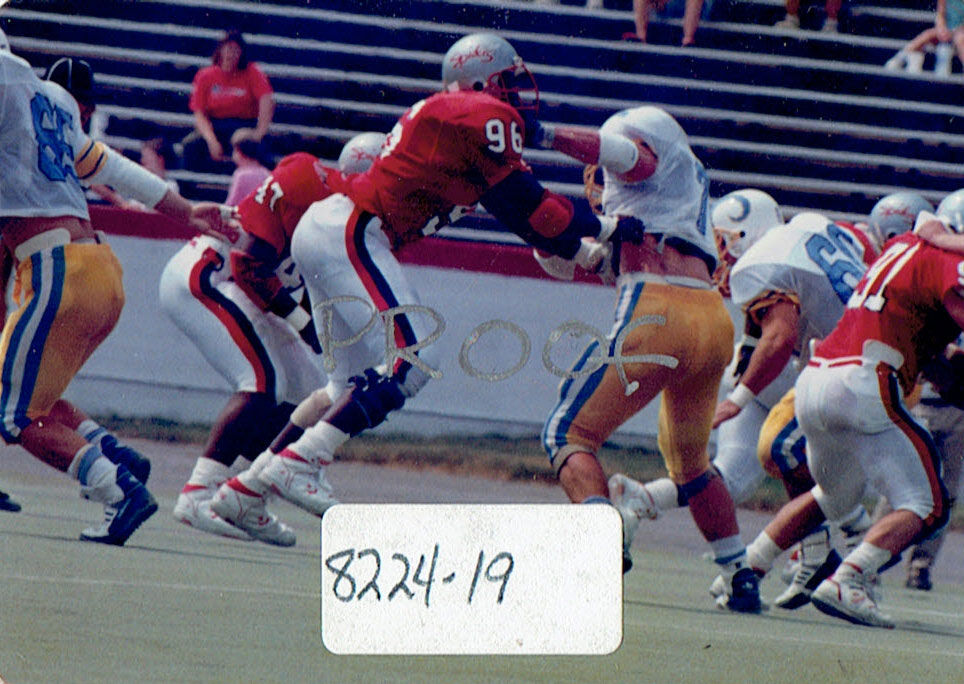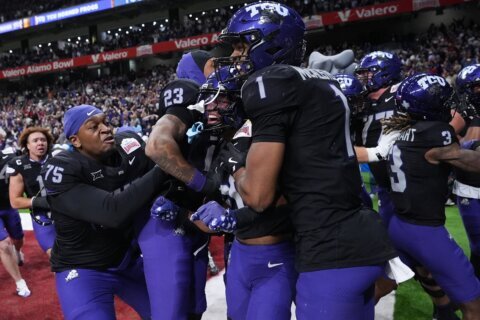WASHINGTON — Every day, Fred Pettus gets dizzy. He doesn’t know when the spells will hit him, but he knows they’re coming, sooner or later. It’s been this way every day for more than 20 years, ever since a concussion ended his promising college football career at the University of Richmond and changed his life forever.
“Sometimes I’m walking and I look like I’m drunk,” he told WTOP in a recent conversation. “And I’ve never had a drink in my life.”
That’s why Pettus, along with nearly 100 other former college players, has signed onto a single sport class action litigation against the NCAA. An earlier class action suit settled in 2016 resulted in a medical monitoring settlement, providing some benefits for former athletes, but gave no monetary compensation for actual injuries.
“The schools, the NCAA, they made their money,” said Pettus, though he never did. Once on the radar of the Buffalo Bills to potentially play defensive end on Sundays, he never got that shot.
When the case was initially filed in late 2016, NCAA chief legal office Donald Remy dismissed its legitimacy, saying “the NCAA does not believe that these complaints present legitimate legal arguments and expects that they can be disposed of early by the court.” But that didn’t happen, and the case has made its way into a yearlong discovery phase, as the sides gather evidence. The NCAA did not respond to a request for an updated comment regarding the current status of the suit.
The parties have worked together to identify four sample cases, including that of Zack Langston. The former Pittsburgh State player shot himself in the chest at the age of 26 to preserve his brain, in which CTE was detected posthumously. The more Pettus learns about the crippling, degenerative disease profiled in the film “Concussion” — which 110 of 111 brains tested positive for in a recent Boston University study — the more he worries the worst is yet to come.
The dizzy spells started November 17, 1989, the day after the third game of Pettus’ junior season as a star defensive end for the University of Richmond football team. That game was a nationally televised affair against James Madison. Pettus doesn’t remember exactly what happened on the play itself, but he woke up on the sideline, being loaded into an ambulance.
“I couldn’t walk straight for a week,” he recalled, struggling to sit up in class and even to make it down the hallways to the right room. “I had my pinkie extended to trace the wall to make sure I was walking straight.”

He’d had several concussions before in practice, but they would be shrugged off and he’d be sent back in to play after a few minutes.
“It was not considered anything serious at that time,” he said. “You got your head dinged. You got your bell rung. You got a little dinger. Basically, brush yourself off, sit out for a few plays, and get back in there when you can.”
Pettus said that if a player suffered a concussion in a game, they’d be held out until the next week, but there was no official protocol.
“With us being so young, of course we didn’t know any better,” said Pettus. “We just did what the coaches told us to do and tried to do our best at doing that.”
By law, college players are seldom actual kids, most turning 18 before they play. But they are student-athletes, unpaid amateurs not privy to multimillion dollar salaries or even workers’ compensation laws protecting them financially from career-ending injuries.
That fateful, severe concussion against JMU ended Pettus’ playing career, but has affected his life every day since. Now 49, he worries the damage he suffered might be even worse.
Pettus checks all the boxes for risk factors for CTE. As we cataloged in our Bad Brains series, linemen bear the brunt of the types of subconcussive hits that have been tied to the disease. Another study showed that kids who start playing football before age 12 are more likely to suffer late-life cognitive impairment; Pettus started playing the game when he was just 8 years old.
Some days, Pettus experiences the other symptoms, too, the disconcerting ones associated with CTE: mood swings, frustration, memory loss. He’ll ask his wife to watch a movie with him, only for her to tell him they’ve seen it twice already. While there is no test for CTE in the living yet, Pettus wasn’t about to wait around for the science to catch up. He knows what happened to Dave Duerson, to Junior Seau.
Pettus got an MRI on his brain, to see what damage had already been done, but also to hopefully set a baseline standard as he got older. The doctor who looked at the results found that Pettus’ brain had significantly atrophied in certain areas, leaving space between the skull and the brain, where the soft tissue had receded. But she was preparing to deliver the bad news to a family member. Based on the damage, she couldn’t believe Pettus was walking straight and could speak to and understand her.
“She was surprised that I was in here by myself having a conversation with her and articulating clear thought,” he said.
But despite being proactive, and despite the new attention being paid to brain injuries, Pettus is very much on his own, just as he was after his injury, fighting an unpopular battle against the sport he once loved to play. Back in school, it meant a sudden break from his peer group, no longer attending meetings and practices, no longer putting on his pads and helmet. Now, despite being one of dozens involved in this class action suit, he often finds himself isolated in his fight, waiting, hoping for justice.
“There is no community of concussed that meet every week, like an AA meeting,” he said.
“No one knows the other. They’re all on their own separate island.”







